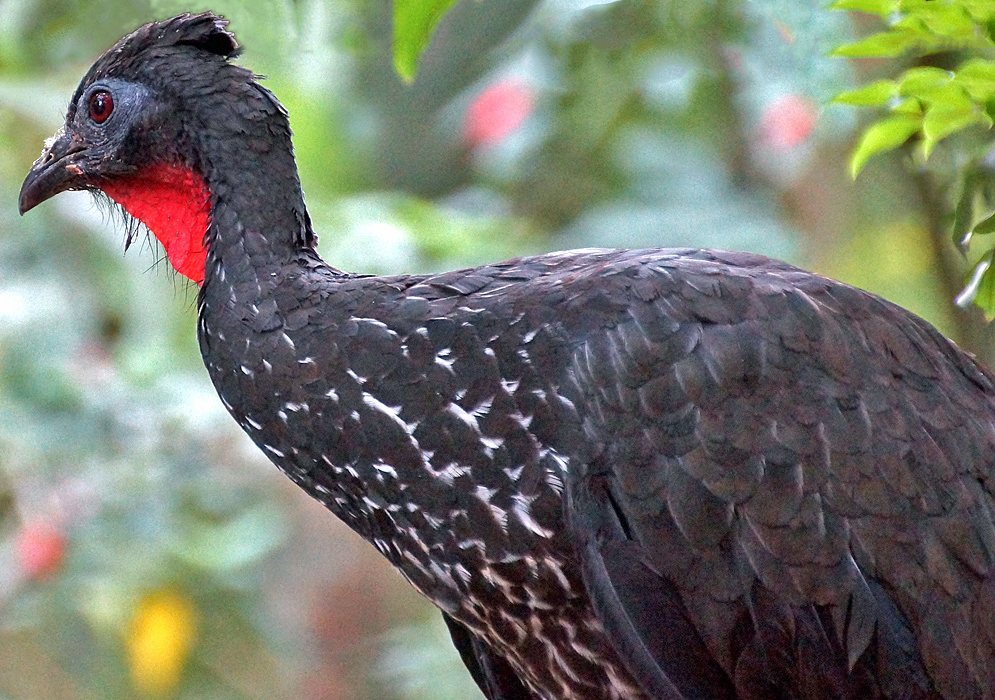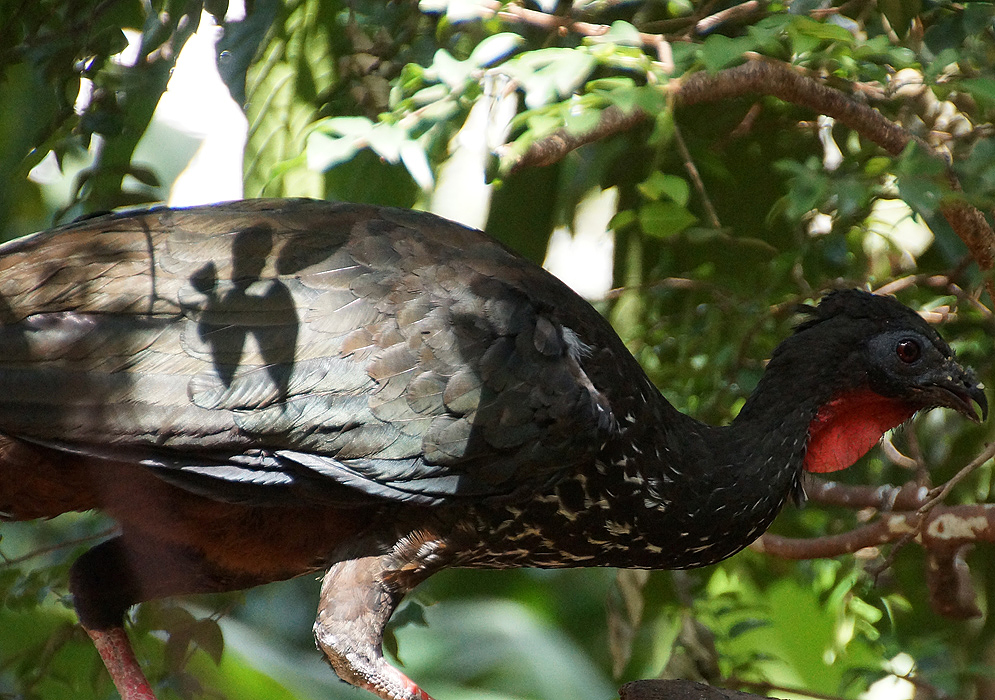This post has 11 Simple Fields-fields attached. Show fields.

The Cauca Guan is endemic to Colombia, particularly concentrated in the Cauca River valley. The Cauca Guan is a large, arboreal bird typically found in humid forests, where it leads a mostly tree-based life. Its historical range included the Cauca River valley between the Quindío Department and Cerro Munchique in Cauca, as well as the Pacific slope of the Cordillera Occidental in Valle del Cauca and Cauca. In terms of physical appearance, Cauca Guans are large birds, measuring approximately 29.5–33.5 inches in length. They possess the typical plump body, long tail, and small head characteristic of the Cracidae species. Their head, neck, and mantle are dark grey, blending into a reddish chestnut color on the rump, scapulars, wing coverts, and upper tail surfaces. The underside of their tail feathers is grey, and the grey feathers on the mantle, throat, breast, and belly are outlined in white, giving them a scaled appearance. They have a bright red gular sac, red tarsi, feet, and eyes, and a dark grey bill. Cauca Guans are typically found at altitudes ranging from 2950 to 8200 feet above sea level. Their habitat includes humid primary and secondary forests, forest edges, and tree plantations. These guans are generalist feeders, consuming a wide variety of fruits, as well as leaves and flowers. They often forage for food in shrubs and trees, mostly by solitary birds or in small family groups, though occasionally larger gatherings of up to 30 individuals occur. The population of Cauca Guans is estimated to be less than 3,000 mature individuals, and the population trend is decreasing. This decline is attributed to a loss of forested habitat, along with forest degradation, fragmentation, and hunting pressures.



